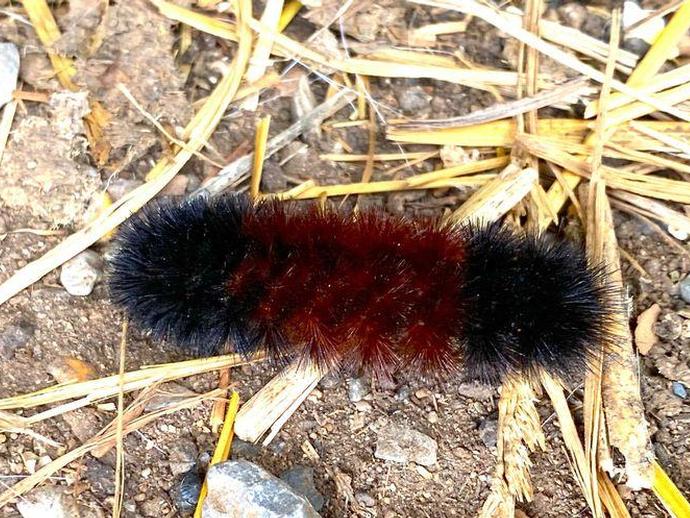October 22, 2021
Ben here with the Friday edition of #BenInNature presented by our friends at Carter Bank & Trust!
Let's close out the week by looking at everyone's favorite invertebrate meteorologist, the woolly bear caterpillar (Pyrrharctia isabella)!
Also known as the "woolly worm," folklore holds that you can predict the severity of the coming winter based on the brown band on a woolly bear caterpillar. A wide brown band means that the winter will be mild, while a narrow (or nonexistent) brown band means a harsh winter is coming. It's also said that if you see a woolly bear crawling southward, it means that it's trying to escape the coming hard winter.
Alas, while these legends are a lot of fun, I have to be the killjoy and announce that they have no scientific merit. Woolly bear caterpillars from the exact same clutch of eggs can have different coloration, and the brown band tends to widen on all woolly bear caterpillars as they grow older and molt.
While they may not be great predictors of weather, these caterpillars are pretty remarkable! The moths (they grow up to become a beautiful moth called the Isabella tiger moth) overwinter in caterpillar form, and they produce a type of natural organic antifreeze called glycerol that prevents their cells from dying from exposure to the cold. They can survive temperatures as low as -90 Fahrenheit, and they can even survive being frozen solid inside a block of ice! In the northern extent of their range in the Arctic, these moths might stay in their caterpillar form for as long as 14 YEARS!
Woolly bears are always popular with little kids because they don't sting or bite and they tend to roll up into little balls when you handle them. However, be advised that their prickly hairs can sometimes cause contact dermatitis in folks with sensitive skin!
ABOUT #BenInNature
Social distancing can be difficult, but it presents a great opportunity to become reacquainted with nature. In this series of posts, Administrator of Science Ben Williams ventures outdoors to record a snapshot of the unique sights that can be found in the natural world. New updates are posted Monday - Friday, with previous posts highlighted on the weekends. This series of posts is made possible thanks to the support of VMNH Corporate Partner Carter Bank & Trust (www.cbtcares.com).
NATURE PHOTO IDENTIFICATIONS
If you discover something in nature that you would like help identifying, be sure to message us right here on Facebook with a picture (please include location and date of picture) and we'll have our experts help you identify it!

 Hours & Admissions
Hours & Admissions Directions
Directions

